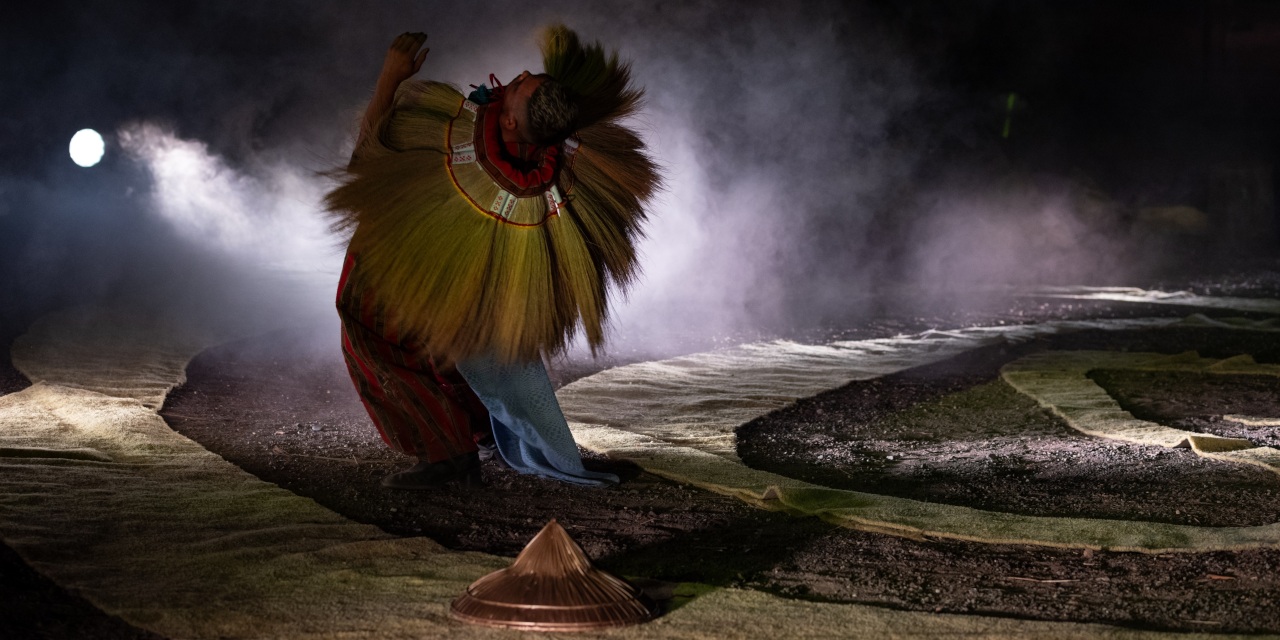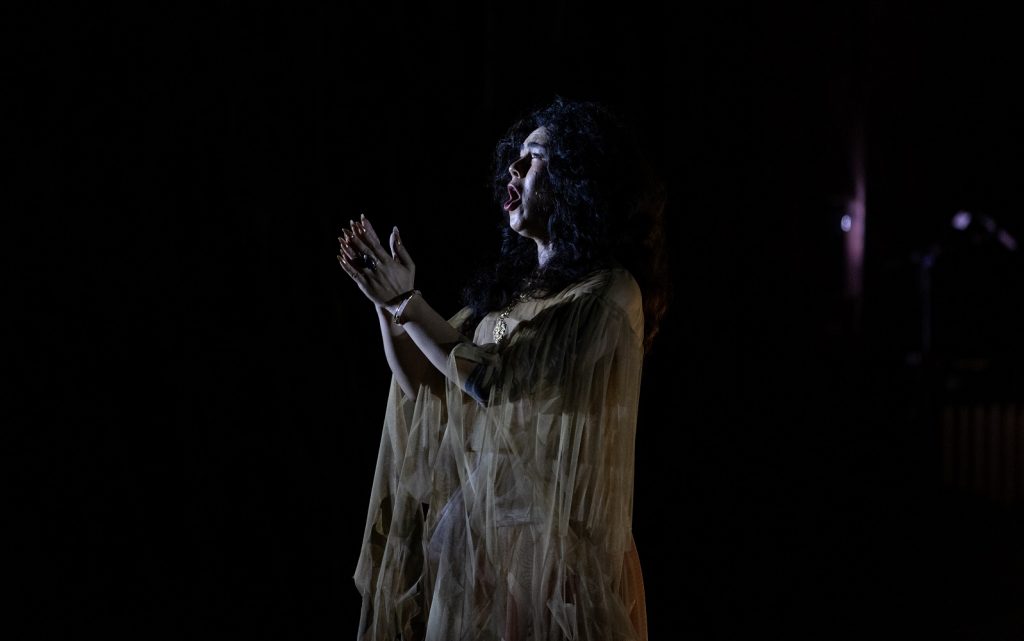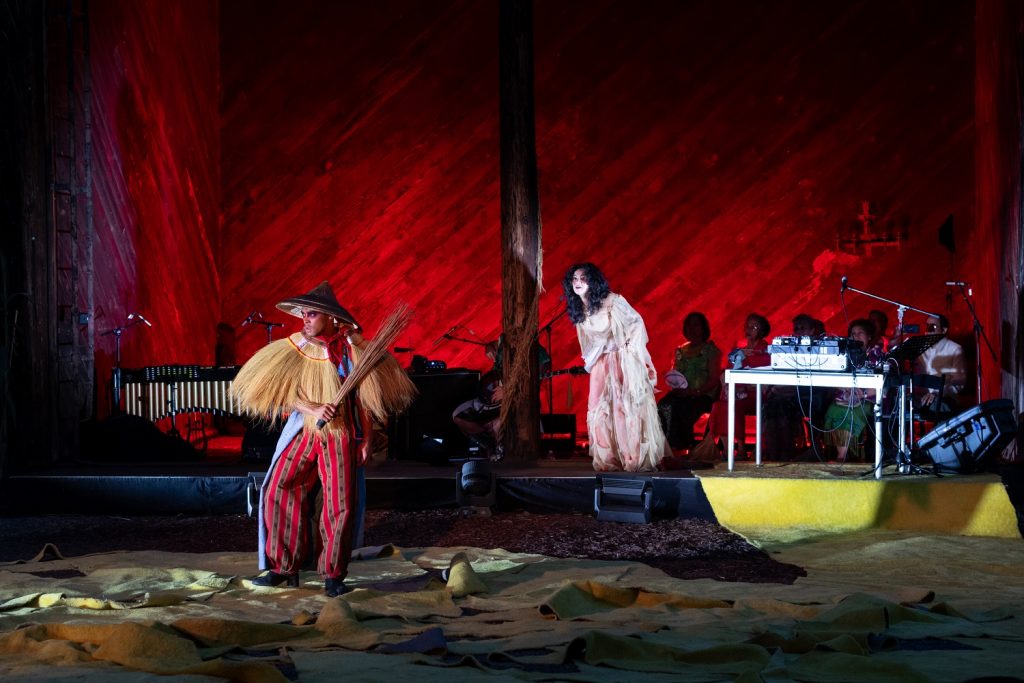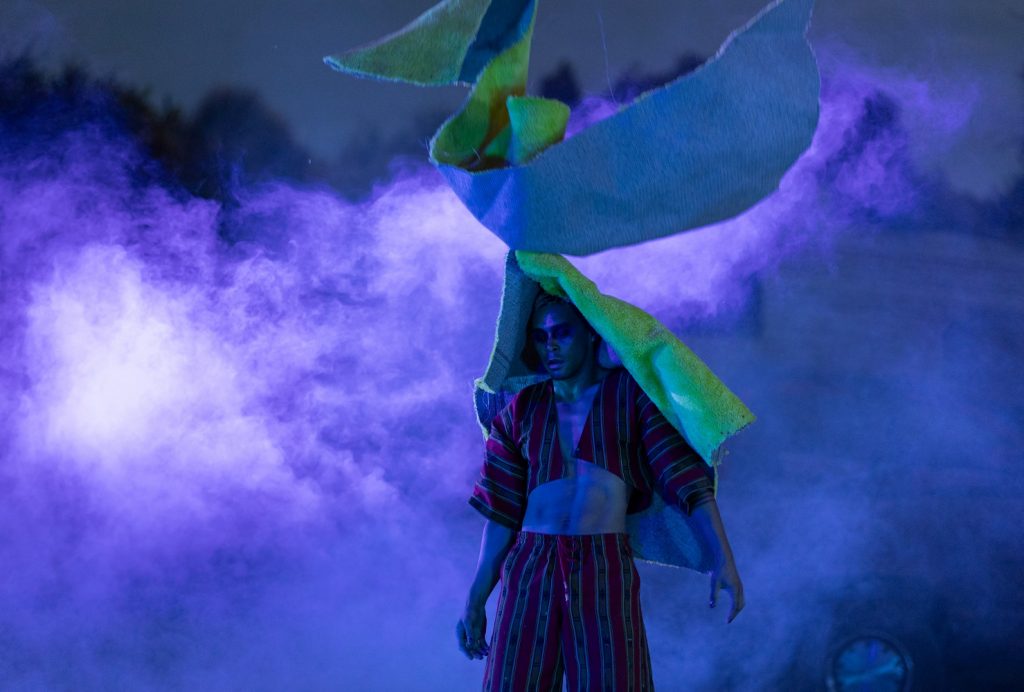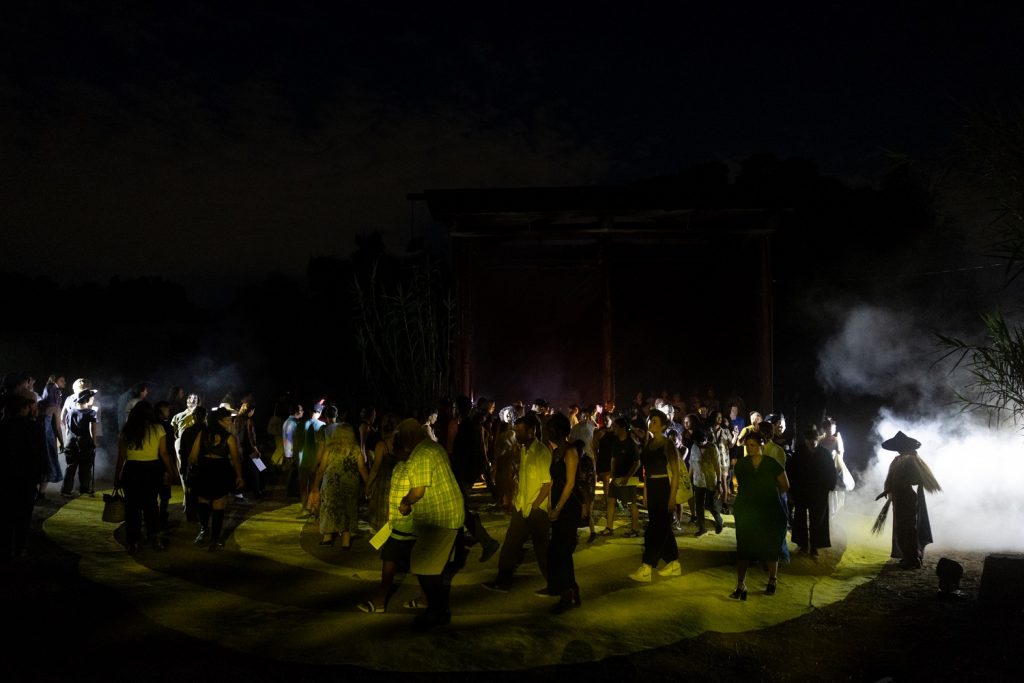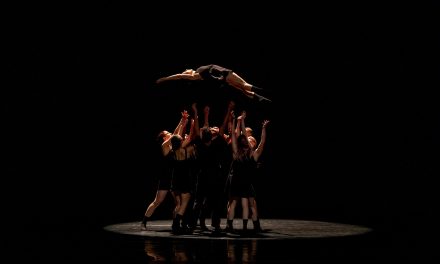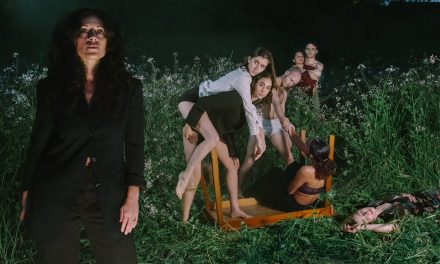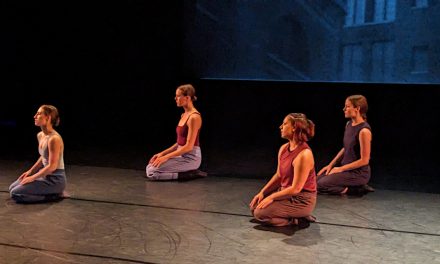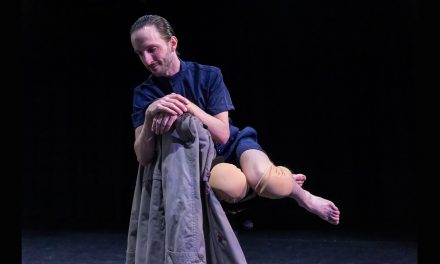Apolaki: Opera of the Scorched Earth was a meaningful experience and performance taking place at the Zorthian Ranch on July 21, 2023. Director and Composer Micaela Tobin along with choreographer and dancer Jay Carlon created a breathtaking expression of the strength of the Filipinx community.
Presented by Los Angeles Contemporary Exhibitions (LACE), the evening began outdoors in a beautiful amphitheater space in conjunction with the sunset. Amongst the dirt landscape was a labyrinth of bright yellow fabric, an installation designed by Carlo Maghirang accompanied by the striking lighting design by Ric Zimmerman. A performer was atop the yellow installation, wearing a traditional headpiece and garment styled by Patria. The soundscape appeared hallowing and eerie as I awaited what was in store.
Suddenly, a chorus of elders from the Filipinx community filed into the space, singing traditional folk songs in Tagalog, Kapampangan and LLocano. The elders moved about the space, sweeping the floors they walked on, and circling dancer Jay Carlon who sat in the center. This moment of the performance was striking on a deep emotional level. It was an incredible way for the performers, producers, and directors who are all of Filipinx descent to honor and acknowledge their ancestors, history, and bloodline.
The performance took an energetic turn as Micaela Tobin entered the space in an almost Rock ‘n’ Roll introduction to the opera. With percussion performed by M.A Harms and electric bass and guitar by Stephen Mcneely, the music shifted the mood towards an intensity matched by Tobin’s voice. Carlon’s movement paralleled this energy in a powerful way as he through space with a ferocity and hunger that almost demanded the space to focus on him. Apolaki is known as the God of Sun and War and this was accurately depicted through the movement’s strength and resilience.
Carlon moved with agility and magnitude, bringing an honor and physical respect to the Filipinx culture. The performance continued as Carlon cleared the labyrinth of yellow material in bold and striking ways that included picking up the material and dress himself to reflected a big hat or an oversized suit. Suddenly the material would be flung far from the performance space with his body reacting in a way that not only showed strength but submission to its weight. Flying through the space energetically and physically, Carlon has a way of capturing focus to portray his story. It is not an easy task to take pedestrian movement and transform it through energy and intention so that it becomes dance, but Carlon does so with ease.
Towards the end of the performance, the audience was invited to stand and move in a circle that outlined the remaining parts of the yellow labyrinth. This community participation took place as Micaela Tobin’s voice filled the space repeating the words, ‘They can’t erase me!’ A moment that was powerful on a universal level. To close, the trance-like walk that the audience was taking ended in a liberation disco, celebrating the power and history of the Filipinx community. A dance party accompanied by disco balls, fun music, and the beautiful legacy of those who came before.
To learn more about Micaela Tobin, please visit her website.
Written by Rebecca Lee for LA Dance Chronicle.
Featured image: Jay Carlon in APOLAKI: Opera of the Scorched Earth – Costume by Vinta Gallery – Photo by Angel Origgi

